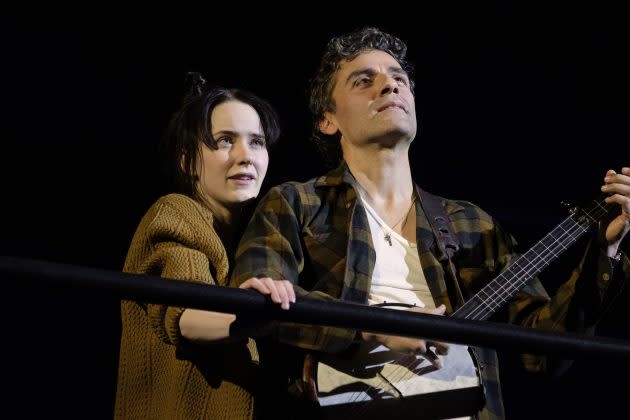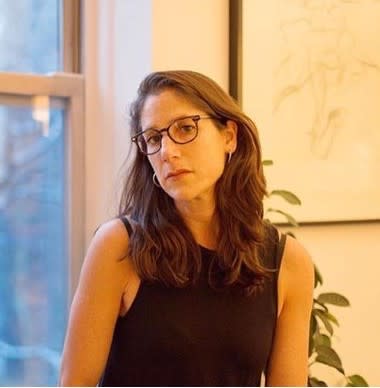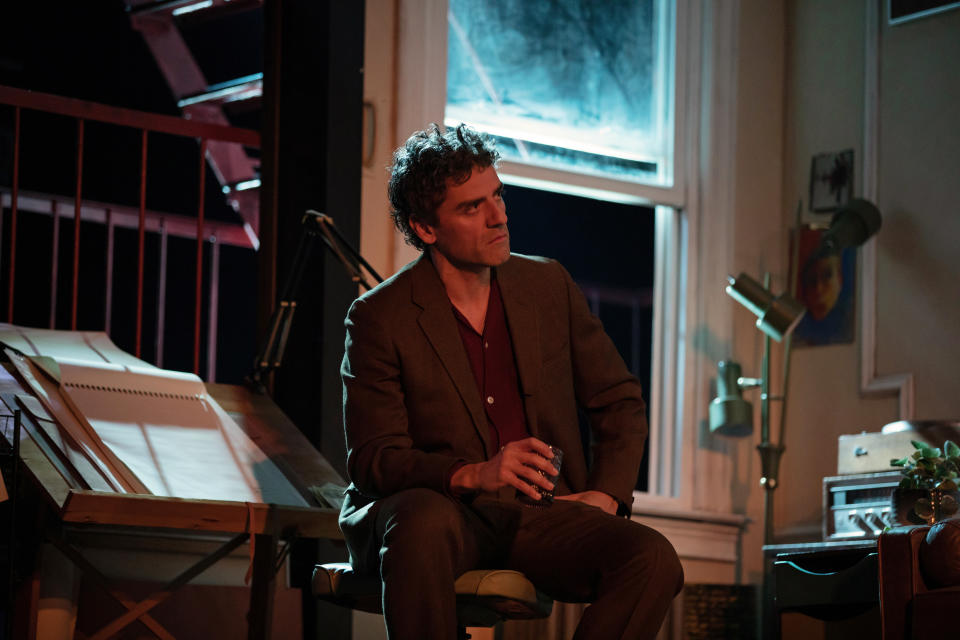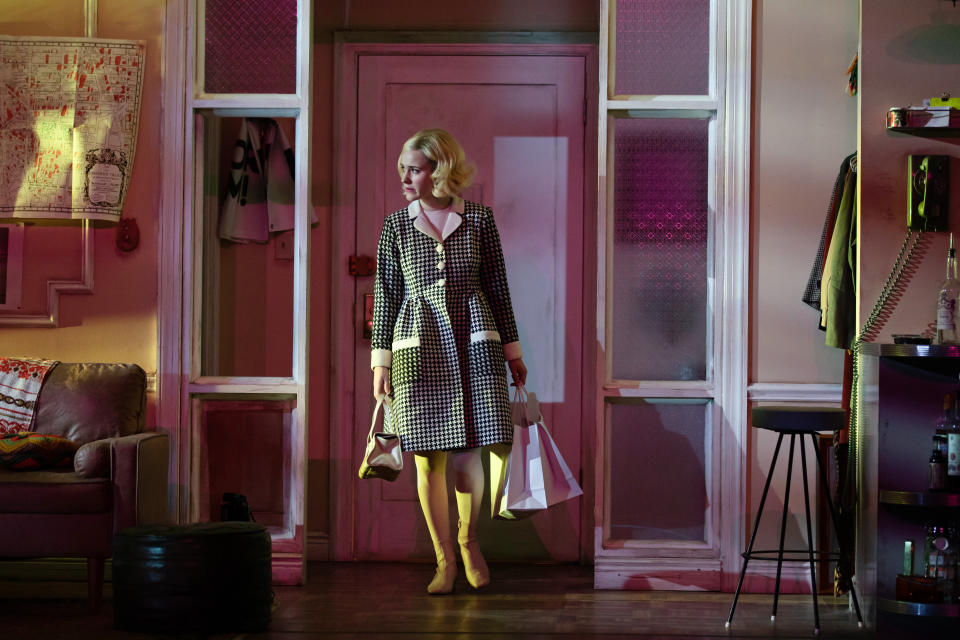The Story Behind Oscar Isaac & Rachel Brosnahan’s Last-Minute Arrival On Broadway – A Deadline Q&A With ‘Sign in Sidney Brustein’s Window’ Director Anne Kauffman
- Oops!Something went wrong.Please try again later.
- Oops!Something went wrong.Please try again later.
- Oops!Something went wrong.Please try again later.
- Oops!Something went wrong.Please try again later.

The current Broadway season schedule seemed done and dusted at the start of this month: With an opening night of April 26, the new Kander & Ebb musical New York, New York would be the final production of 2022-23, arriving just a day before the April 27 Tony eligibility cut-off date.
But on April 4, a newcomer entered the ring, with an opening night set for the very date of the Tony cut-off. Well, not exactly a newcomer. The Sign in Sidney Brustein’s Window is a rarely performed 1964 play by Lorraine Hansberry, a mostly forgotten work forever overshadowed by the playwright’s 1959 masterpiece A Raisin in the Sun. Hansberry died at 34 shortly after Sidney opened, and it would take nearly 50 years – and two very popular stars – before the play would return to Broadway.
More from Deadline
'The Thanksgiving Play' Broadway Review: No Meat On These Bones
Todd Haimes Dies: Artistic Director Of Broadway's Pioneering Roundabout Theatre Company Was 66
The new production of The Sign in Sidney Brustein’s Window will star Oscar Isaac (the Dune and the Star Wars franchise actor will be making his Broadway debut) and Rachel Brosnahan (star of The Marvelous Mrs. Maisel, which premiered its fifth and final season this month on Amazon Prime) reprising their performances from the limited, sold-out Off Broadway engagement that closed at the Brooklyn Academy of Music last month.
Directed by Anne Kauffman, who has had her sights set on the little-known (at least by Raisin standards) play for years, The Sign in Sidney Brustein’s Window will begin performances at Broadway’s James Earl Jones Theatre on Tuesday, April 25, opening Thursday, April 27 and running for 80 performances only. Producers for the Broadway staging are Seaview, Sue Wagner, John Johnson, with Jeremy O. Harris and BAM.
The play is set in early 1960s Greenwich Village, and focuses on a group of friends, family and acquaintances – somewhat diverse but mostly white, mostly straight, mostly liberal – of Sidney and Iris Brustein. He’s a dreamy, if burned-out, progressive Jewish writer and publisher, she’s a fledgling, and secretly ambitious, Midwestern actor, and both are struggling to hold on to their ideals, their marriage and their rather tenuous grips on the life they’ve built together.
Joining Isaac (Sidney Brustein) and Brosnahan (Iris Brustein) on Broadway is the complete cast from the BAM production, including Gus Birney, Julian De Niro, Glenn Fitzgerald, Andy Grotelueschen, Miriam Silverman and Raphael Nash Thompson.
So how did a Broadway production with two major stars fall into place so quickly? Deadline spoke to Kauffman for the answers.
This interview has been edited and condensed for length and clarity.

DEADLINE: Was Broadway something that you envisioned from the start with this production?
ANNE KAUFFMAN: You always have that in the back of your head like maybe, but I really felt like with Oscar and Rachel’s schedules that BAM was going to be it, and I have to say I was so thrilled to be able to do it at BAM, you know what I mean? That was really, really satisfying and I think I just assumed that Oscar and Rachel would be off to other projects. Then Oscar said something about “if we transfer X, Y, and Z,” and I was like oh! So that’s the first time I thought, “He’s actually thinking about it,” and I thought, “Okay, so I guess we’re thinking about that.”
Then I thought, you know, how the hell are we going to do this, because if you’re thinking about transferring a show the following year after it’s over, the momentum is gone and people are onto other projects. So, the fact that these crazy producers want to get it in under the [Tony] deadline this season is just an unbelievable feat. It truly reminds me of what actually happened in the original Broadway production [of Sidney Brustein] where a bunch of artists and people who were champions of Lorraine’s work and champions of theatrical work came together to keep the show running past the time it was supposed to close, or past the time the critics wanted it to close.
So, I just love the passion that this play inspires in people who really find it a work and a voice that is crucial and belongs in the canon. I’m really thrilled to be able to branch out beyond Brooklyn and beyond BAM audiences to get some unsuspecting tourists to wander in and experience this play.
DEADLINE: Was that the motivation of the producers in moving it to Broadway?
KAUFFMAN: I think that there was a lot of interest with certain agents and the agencies and starting that conversation. I can’t remember how the conversation with Rachel actually started, but when Jeremy O. Harris heard it was closing, he was like “I’ve got to do something about this.” Then he got in touch with other producers who felt the same way. They thought Broadway was a no-brainer.
It’s such an incredible piece and part of that obviously has to do with the cast and obviously has to do with the playwright, but I think the fact that this has been a play that no one has really heard about or seen in any sort of significant production, it’s like discovering gold.
DEADLINE: A Raisin in the Sun is such a huge part of the theater canon, one of the most famous plays of the 20th Century. How did Sidney Brustein become this forgotten work?
KAUFFMAN: I feel like it’s a wild, wild piece compared to A Raisin in the Sun. There’s something very meticulous and very closed circuit about it, in a good way. It’s totally coloring outside the lines. It’s turning structure and what is a tightly made play inside out. I think she was incredibly ambitious with this play. With Raisin in the Sun, she knew those families, she grew up in Chicago, but they were pretty well-to-do compared to the family in Raisin in the Sun. But the people in Sign in Sidney Brustein’s Window are her people, her milieu. She knows them really well.
People often talk about this play as an unfinished play. Well, the fact of the matter is that on one hand it is finished because the writer put down her quill. But she did so many rewrites that we have a lot of material that can be brought in and out of the work, certain structural things that she did during her rewrites, and we have them all. We have all of that.
So, for me, while one way is to say it is unfinished, another way of describing it is that it’s completely alive and open-ended in terms of our engagement with it. I think a lot of people get away with criticizing it because they call it unfinished, but I think what she was doing was playing with form. She’s busting everything open, and I think that critics in the 1960s thought, first of all, “she’s not in her lane” because she’s not writing about Black people and the family unit doesn’t live within four walls. It’s full of intruders, you know what I mean? It’s just like a whole different thing than Raisin in the Sun. She just turned around and did something completely different.

DEADLINE: People then and now might be surprised by the critique of progressives, the Greenwich Village, white progressives, especially men, that figure so prominently in the play. That must have been very surprising to critics of the 1960s.
KAUFFMAN: I think you’re absolutely right, and I don’t mean to underplay that. I absolutely agree with that, and I actually think what’s interesting about doing it now is that we have hit it at a sort of perfect moment [when] we’re so in the middle of all these identity and cultural arguments. So on the surface, that might be the thing that can get people involved in it, but at the core she’s really talking about basic human dynamics. I feel like what makes it universal and timeless is that she’s really rooting inside of how we behave in relationships, how we behave in friendships, how we are able to compartmentalize or not compartmentalize. Those are the things that I feel are timeless.
But yes, we’re lucky that we hit at this sort of topical issue moment, because I’ll tell you I tried several times to get this done over the past 16, 17 years and people would say, “This is dated.” That was the main reason why I couldn’t get it done before. So now, yes, it might be topical but I think it’s much bigger than that.
DEADLINE: One of the things she does in this play is present people who are liberal in one way and what we would now call conservative or right wing in another way. There are characters who fight for Civil Rights but they’re also homophobic. You have the main character Sidney who’s this progressive thinker but also really misogynist. Hansberry was showing that you can be all of these all at once. Perhaps people might be more open to that argument now than in the 1960s.
KAUFFMAN: I think you’re right, and how complicated is that? Like what other play from that time presents these complex characters?
DEADLINE: In your research, did you find that any of these characters have a correlation in the real world? I kept thinking the politician was Ed Koch.
KAUFFMAN: You’re not wrong. Basically, Koch is coming a few years after this play. I keep saying Hansberry was either prescient or she understood history, you know what I mean? She had a laser focus on how politics work, how good intentions can turn, and I think that’s the whole thing about the white liberal in a way, getting tired of the fight and thinking “Oh I’ve done enough.”
DEADLINE: And the playwright character, I keep thinking Albee.
KAUFFMAN: Exactly right. In fact, this play was originally called Up Yours Edward Albee.
DEADLINE: Let’s talk a little bit about the logistics of the production. How are you getting it transferred so quickly? Will it be essentially the same production we saw at BAM or are you making changes to it?
KAUFFMAN: We are making changes to it. In terms of design, the changes will be mostly to do with the new space. For me what I love are the opportunities for thinking about things differently. I feel like I’ve been inside this play for a long time but have discovered a whole new production with this cast and with these designers and I feel like we’re not finished. Also we’re fussing with the text a little bit.
Again, we have at our disposal all of her thoughts and all the variations she wrote. So this gives us a chance to try out a few things, and I know that there are certain themes that the actors and I don’t feel like we’ve cracked. So this just gives us a chance to do all of that while everything is still really fresh in our minds. Sidney’s blood is still coursing through all of our veins, and we very much see this as an opportunity to grow the thing.

DEADLINE: How did the schedules of Oscar and Rachel mesh up so quickly to allow a Broadway run? Was this in their thinking all along?
KAUFFMAN: I think it was a series of fortunate coincidences, like Oscar’s movie got pushed back, and so did Rachel’s. I think there was a desire on their part and everyone else to do this. Some people have moved mountains to do this with their schedules.
DEADLINE: Rachel’s new season of Mrs. Maisel just recently started. Obviously she’s already filmed that, but I imagine she had promotional stuff to do.
KAUFFMAN: It’s nuts. I will tell you that Rachel is young and vibrant and is a can-do person, but you wouldn’t believe the sort of backbends and twists and turns that she’s doing with her schedule to make this happen. It’s astonishing.
Best of Deadline
Hollywood & Media Deaths In 2023: Photo Gallery & Obituaries
2023 Premiere Dates For New & Returning Series On Broadcast, Cable & Streaming
Sign up for Deadline's Newsletter. For the latest news, follow us on Facebook, Twitter, and Instagram.

